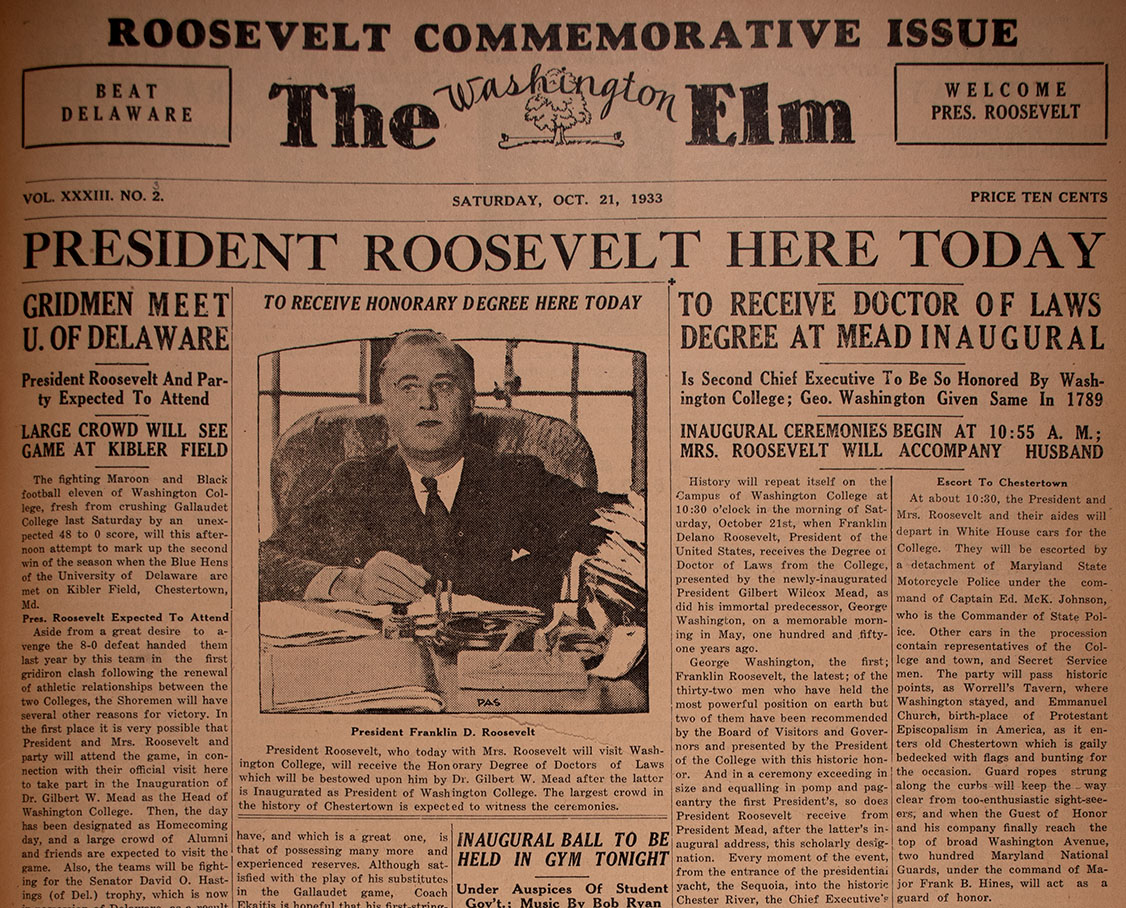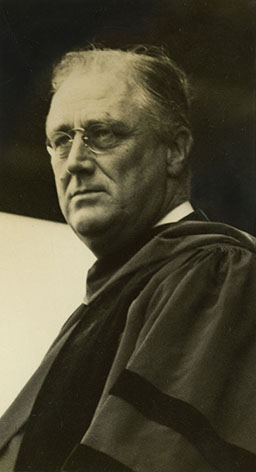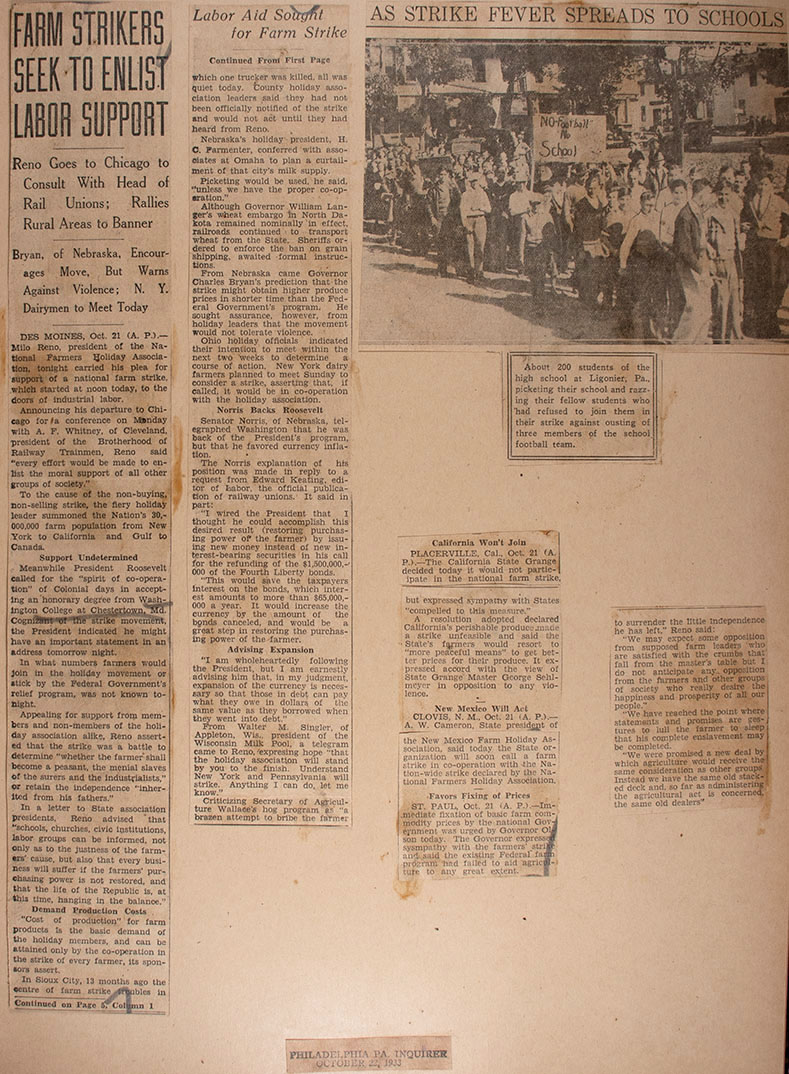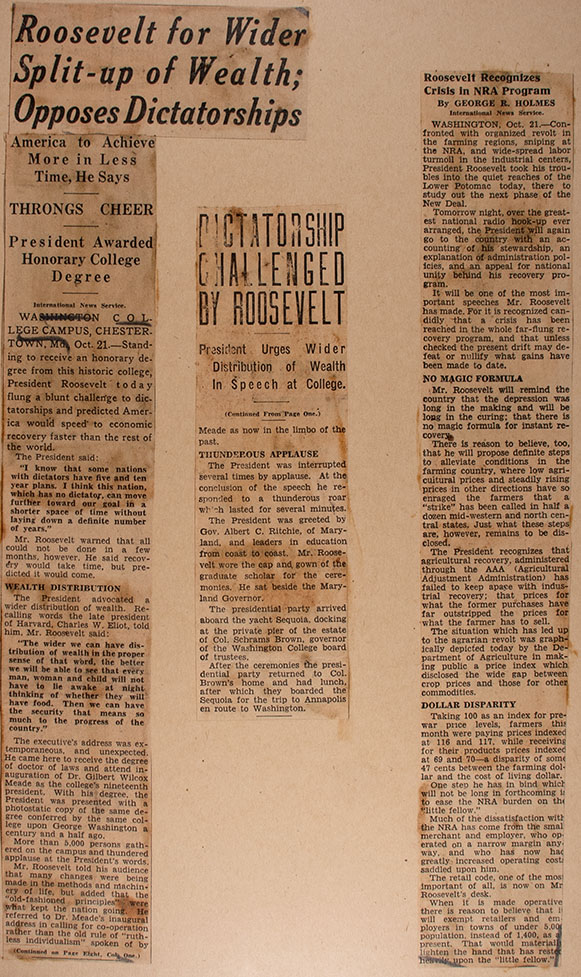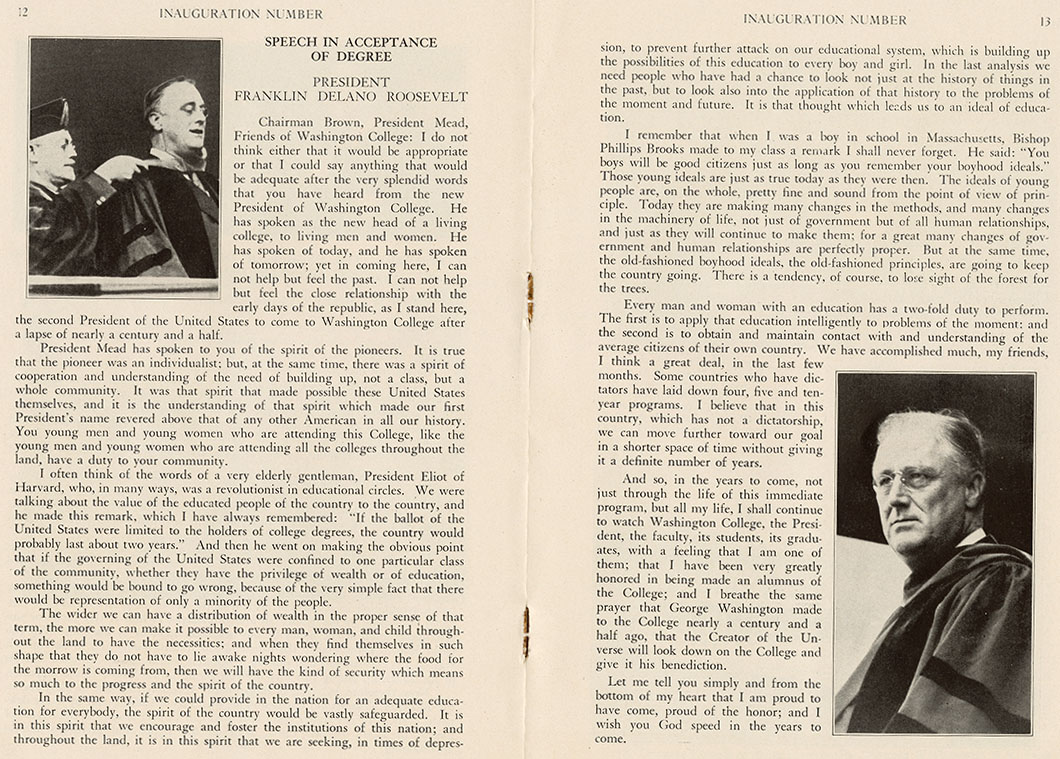President Franklin D. Roosevelt - October 21, 1933
The New Deal Policies Still Relevant to the Political Discourse
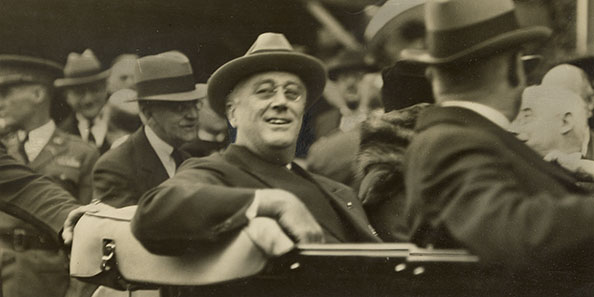 Washington College photograph collection, Roosevelt driving to the College after arriving aboard the U.S.S. Sequoia.
Washington College photograph collection, Roosevelt driving to the College after arriving aboard the U.S.S. Sequoia.
Economic Equality = Stability and Progress
In the fall of 1933, Roosevelt’s First New Deal was in full swing, addressing the issues created by the Great Depression. Key initiatives included banking reform, the creation of the Securities Act, and various relief and recovery efforts. It wasn’t until 1935 and the Second New Deal that programs focused on the redistribution of wealth began to emerge. In his speech at President Mead’s inauguration, we see how the relief programs were starting to promote these ideas of economic equality. He framed these programs as essential to the nation’s strength and security. In a country still reeling from the Great Depression and suffering from economic instability, the promise of not worrying about feeding one’s family is an appealing vision of the future. This vision not only echoed the concerns of an anxious nation domestically but also hints at the country’s security on the world stage. At this time, Adolf Hitler’s totalitarianism had begun his rise to power in Germany out of an economically crushed Weimar era, underscoring the potential danger to American democracy. This is only briefly, and even jokingly, mentioned in this speech. Roosevelt was still in the process of selling the American people on his New Deal policies, many of which resonate in today’s political discourse.
Accessible College Education
In 2021, the policy plan “New Deal for Higher Education” was created to help reauthorize the Higher Education Act, clearly echoing FDR’s depression-era relief programs. In this speech to Washington College, Roosevelt acknowledges the privilege assigned to higher education in both class and race. This was particularly notable coming from a man whose own education epitomized these privileges. While casually mentioning his own private school education, Roosevelt simultaneously downplayed it as an automatic presumption of success, but rather the application of education grounded in reality that was the key to success. Roosevelt’s administration aimed to make higher education accessible to all while strengthening the institution of education itself. Later, the New Deal would implement programs that provided government-supported financial aid for higher education and broadened access to educational opportunities. Today, navigating the world without a college degree can put one at a disadvantage, yet obtaining a degree can also result in lifelong debt. Striking a balance to uphold the ideals of the New Deal—government-supported education and equitable access—continues to be a pressing issue for many young Americans.
Play Audio Clip
“The wider that we can have a distribution of wealth in the proper sense of that term, the more we can make it possible for every man, woman, and child, every family throughout the land to have the necessity for they find themselves in such shape that they do not have to lie awake at night wondering where the food for the morrow will come from, then we will have the kind of security that means so much to the progress and the safety of a country. In the same way, if we could provide in the nation for an adequate education for everybody, then again the spirit of the country would be vastly safeguarded. It is in this spirit that we encourage and foster the institutions of education throughout the land, it is in this spirit that we are seeking the days and times of the present to prevent further attack on our educational system, it is in this spirit that we believe in building up the possibilities for education of every boy and girl.”
Play Audio Clip
“Every man and woman with education has a two-fold duty. The first is to apply that education intelligently to problems of the moment and the problems of future; and the second is to obtain and maintain contact with and understanding of the views of the average citizens of their own country.”
